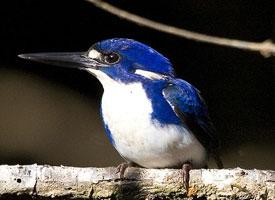
Weights and measures
| Length | from 16 to 17 cm |
|---|---|
| Weight | from 40 to 45 g |
| Wingspan | from 24 to 26 cm |
Animal description
The Common Kingfisher (Alcedo atthis), often heralded as one of the most vibrantly colored birds in the world, is a small yet captivating creature that graces various water-rich environments across Europe, Asia, and North Africa. This bird is a member of the kingfisher family, known for its distinctive physical features and behaviors that make it a subject of fascination among birdwatchers and nature enthusiasts.One of the most striking aspects of the Common Kingfisher's appearance is its plumage. The bird exhibits a dazzling array of colors; its back and wings are cloaked in a brilliant metallic blue, which can appear almost iridescent under sunlight. The underparts, by contrast, are a rich orange or chestnut, providing a stunning visual contrast that is hard to miss. The bird's head is adorned with a white patch on each side of the face, and it has a long, slender bill that is black with a slight orange hue at the base, perfect for its fishing exploits.
The Common Kingfisher is a small bird, measuring about 16-17 cm in length and weighing between 34-46 grams. Despite its diminutive size, it is a formidable predator. Its body is streamlined for rapid flight; short, rounded wings and a sturdy body make it incredibly agile in the air, capable of darting out of sight in the blink of an eye. The bird's large, keen eyes are adapted for excellent vision, both above and below the water surface, enabling it to spot its prey with remarkable precision.
Diet-wise, the Common Kingfisher lives up to its name, primarily feeding on fish. It has an extraordinary fishing technique: it perches silently above the water to spot its prey, then dives headfirst into the water with incredible speed and accuracy to catch the fish. It also consumes aquatic insects, small crustaceans, and tadpoles, making it an important part of its ecosystem by helping to control the populations of these species.
The bird's nesting habits are as interesting as its feeding behaviors. The Common Kingfisher excavates tunnels in riverbanks or sandbanks to lay its eggs. These tunnels can be up to a meter long, ending in a chamber where the female lays five to seven eggs. Both parents take turns incubating the eggs, and later, feeding the hatchlings until they are ready to fledge.
The call of the Common Kingfisher is a sharp, piercing whistle, often heard before the bird is seen. This sound serves as a communication tool, especially during the breeding season or as an alarm signal when threatened.
Despite its widespread distribution, the Common Kingfisher faces threats from habitat destruction, pollution, and changes in water quality and availability. Conservation efforts are essential to ensure that this magnificent bird continues to thrive in its natural habitat.
In summary, the Common Kingfisher (Alcedo atthis) is a small, brilliantly colored bird whose life revolves around water bodies where it hunts, nests, and raises its young. Its striking appearance, fascinating behaviors, and the role it plays in its ecosystem make it a cherished species among those who appreciate the natural world.
Similar Animals
New photos of animals
Top 10 animals
- Dolphin gull (Leucophaeus scoresbii)
- Diana monkey (Cercopithecus diana)
- Moustached guenon (Cercopithecus cephus)
- Galápagos tortoise (Geochelone nigra complex)
- Japanese macaque (Macaca fuscata)
- Stone loach (Barbatula barbatula)
- Russian tortoise (Testudo horsfieldii)
- Greek tortoise (Testudo graeca)
- Common flying dragon (Draco volans)
- Vendace (Coregonus albula)
